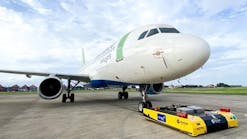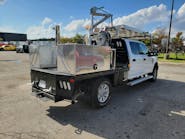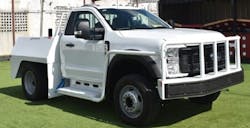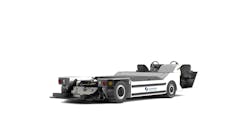The L3 Commercial Training Solutions team stresses the importance of ground operations safety, especially when training employees on specialized ground vehicles.
In addition to employee safety and improved handling skills, proper understanding and operation of ground support equipment (GSE) ensures efficient aircraft turnaround, less ground damage and an improved bottom line.
Dave Rapley, VP of Training Systems at L3 Commercial Training Solutions, explains the key benefits to implementing the company’s PushbackSim training simulator.
“We believe simulation-based training is a critical training tool to help reinforce positive decision-making in a safe, risk-free environment,” he says. “This translates into reduced accidents, better decision-making and reinforcement of policy and procedure.
“Better trained ramp crews reduce operational costs and additional capital investment in vehicles,” Rapley continues. “By integrating simulators into a training program, aircraft and equipment are spared heavy use, require less maintenance and last longer.”
The first production system of the new PushbackSim was delivered on Dec. 15, 2016 to one of the largest domestic airlines.
“Our legacy version of the L3 pushback and deicing simulators were originally manufactured and designed by L3 MPRI and gForce Technologies,” Rapley explains, noting those entities are now part of the L3 Driver Training Solutions product line.
The redesigned PushbackSim incorporates several hardware and software improvements. The most prominent upgrade is the utilization of the L3 Series 6 product line design, including a new modular visual display system and driver cab compartment.
“The Series 6 Visual Display Unit (VDU) is mated to a versatile driver compartment/seat-base for pushback operation. The seat-base is designed on a rolling sled that mounts to the VDU,” Rapley says. “The sled is comprised of a seat, steering control, brake and accelerator pedals, a dashboard and a single touchscreen on the dashboard. The dashboard-mounted touchscreen provides lesson selection interfaces as well as tractor control/instrumentation interfaces.”
The simulator is modeled after the FMC B1200, or FMC Expediter 160 (towbarless) tractors and can simulate operations on Airbus (A319, A320, A380), Boeing (B737-400, B737-800, B747-400, B757-200, B757-300, B767-400, B777-300), De Haviland (Dash 8), Douglas (DC-9-30) and Embraer (ERJ145) aircraft.
“The PushbackSim is equipped with scenarios and software to train on both towbar and towbarless tugs. L3 professional services also offers engineering and visualization software capabilities to customize scenarios and database development to support additional types of environments and training objectives,” Rapley says.
Allowing employees to train and hone their skills with a simulator reduces potential damage to GSE as well as to aircraft. Avoiding ground handling accidents is critical to keeping operational costs down.
An independent study conducted by VanAllen, a business aviation consulting group, which investigated towing accidents over a two-year period.
The results showed nearly 30 of the 80 aviation departments and FBOs that participated in the study had at least one ground incident during the time frame. The study found there were 64 ground events logged over the course of 168,810 aircraft legs flown, which came out to a ground-event rate of approximately one event per 4,000 flight hours.
The total estimated cost of these accidents was in excess of $12 million, breaking down to about $586,000 worth of cost and lost revenues per event.
“We believe that improving ground handling operations is vital to the safety of personnel, sustainment of equipment and operations efficiency of our customers,” Rapley says.
He adds that L3 regularly works to understand its customer’s needs in order to make cost-effective, value-added improvements to their training capabilities.
“All L3 driving simulator software is equipped with remote support capabilities for software updates on-site,” Rapley explains, noting the company also provides driving simulators for other GSE, including fueling trucks, catering vehicles, passenger buses and airport security vehicles.
“As technology advances in the future, L3 strives to build solutions that help customers get the most out of their investment, while balancing maintenance and costs. Our upgrade program offers a simple and effective path to ensure customers leverage the latest technology and capabilities possible, while taking advantage of existing components that customers already own.”
The PushbackSim, which measures 110.2” by 64.1” by 76.7”, weighs 1,300 pounds and can pass through a 72” wide double door without center posts when fully assembled, can be set up in a fixed-site location or a mobile trailer that has the proper electrical and environmental conditions.
Currently three domestic airlines are using the newest version of the PushbackSim. Another airline utilizes the legacy version of the simulator. The units are deployed at airline training centers at Dallas-Fort Worth, Phoenix, O’Hare and Charlotte airports.
The PushbackSim is not meant to replace traditional classroom training, but rather enhances it, according to Rapley. The ideal approach is a dynamic, blended training environment where classroom time integrates with the advanced training simulator to test student skills before operating real equipment, he concludes.






